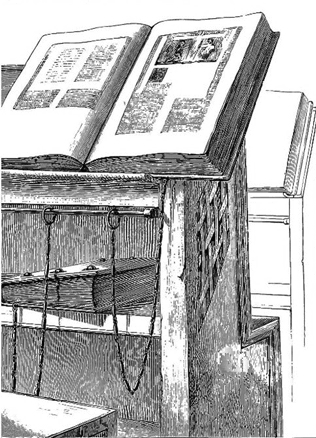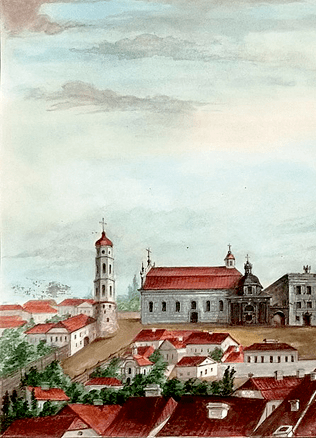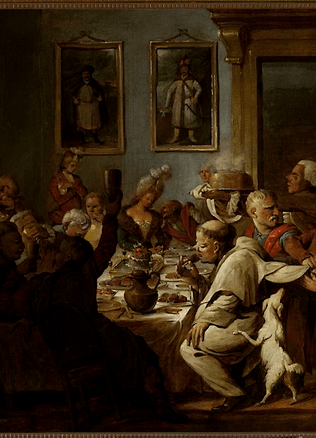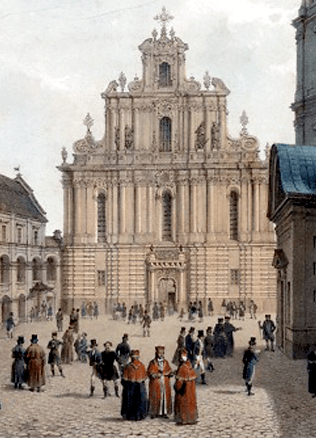Sorcery and Witchcraft in the Grand Duchy of Lithuania
Even though there was no Inquisition in the Grand Duchy of Lithuania, the witch trials were known to be held as a continuous practice. Witch trials were judged by secular courts such as the gentry court (the castle and the land) and the town court (that of the reeve and the magistrate). This process in the GDL was undertaken on a significantly smaller scale than in the countries of West Europe. About several hundred cases have survived as testimony of voodoo, witchcraft spells, witch trials and subsequent sentences. In Lithuania witch processes started in the 16th century, but most surviving court documents date back to the 17th and the first half of the 18th centuries. The Lithuanian Statute did not contain any articles on witchcraft or persecution of witches. If such incidents occurred and if harmful activities through witchcraft spells were “proven”, punishment was imposed, as in the case of bodily injury or murder.
The dishonourable craft of a witch
Being called a sorcerer or a witch was considered a heavy insult.
There is mention in the court cases of such complaints. For example, in 1766, a complaint was lodged by Tom and Hanna Bagdzewicz against the defendant Anthony and Hanna Mikhailovsky, servitores from the Minsk district. The latter were accused not only of being violent and threatening them during the conflict in question but also of calling them thieves and sorcerers.
At the junction of the 17th-18th centuries, a criminal from Vilnius, a Jew Šapša Šimutovič, with the aim of emphasizing his wickedness, was described not only as a murderer and a thief but also as a sorcerer.
Sorcerers were believed to have powers to bring harm. Even monks were accused of tolerating sorcerers. To illustrate the point, in 1742, the starost of the present-day Belarus, Anthony Tovianski, blamed the Videniškiai monks adhering to penitential canon for failing to punish the sorcerers Michael and Casimir Lazar, who had done wrong through witchcraft spells to Joseph Denovagi, a subordinate of the Tovianskiai, and were guilty of causing several dozens of death.
Such accusations were made not only in the Catholic but in Muslim Tartar environment as well. Thus, there is mention in the case of 1703 of the incident when the Lukiškės Tartar widow Emina Musnicka and her daughter Marijona were strongly believed to have cast spells on the Tartar Alška Razmusova, inflicting physical pain upon her. The court found them guilty.
Satan worshippers and witch feasts
At times it was believed that certain persons had made a deal with the Devil, sneering at the Christian Sacraments. Thus, several men were imprisoned in the Vilnius castle in 1756 on the allegations of “having worshipped the Satan and renounced God.” During the inquiry, the defendant Michael Tupalski, coming from the gentry, is said to have given the following story: the men in question decided to shoot at the Host. Having received the Host during the Holy Communion, the rascals started shooting at it and swore to renounce the God and Blessed Virgin Mary and embrace Satan. Michael Tupalski and his accomplice John Rusecki were convicted of being burnt at the stake. The confession might have been obtained through torture but there is no mention of that in the court documents.
Quite often charges of witchcraft spell and sorcery were brought against herbalists and healers.
For example, in the books of the Kaunas Reeve the case is mentioned that a certain Catherine from Kaunas used to give some herbs to the town dwellers, which was a cure for their diseases. The judges asked the defendant, who had taught her to cast spell and the woman allegedly replied that it was the Devil, who walked at night. She added that he had visited her three years ago and taught her magic…
The defendants, squealers and tattlers, both women and men, would narrate different stories about witchcraft. They talked of witch feasts, morphing into animals and devils (the devil was usually seen as a young gentleman – lounger or a German youth). In 1725, the Biržuvėnai reeve Anthony Zaborovski imputed blame to several women and men for having cast malevolent spell on their masters, allegedly seeking to kill them and their children. The women accused of witchcraft were thrown into the water. If the women survived, it was regarded proof of her witchcraft.
A certain Marytė confessed she had struck a deal with the Devil prior to being tortured.
Her neighbour Tichanas, according to the woman’s story, turned himself into a German, whereas his wife and Pilypienė taught her witchcraft. She was instructed to take a sample of saliva from the Biržuvėnai Reeve’s son and anoint her veins with it. She allegedly obeyed the orders given to her… During the interrogation, Marytė confessed that she had flown to the The Bare Hill (also known as Šatrijos Hill) together with the malevolent warlock Markauskas. To acquire the powers taking her all the way to the Hill, Marytė had to rub the ointment given by Tichanienė into her skin. Upon arriving to the The Bare Hill, she saw a feast going on. Many lords had been invited to attend the feast arriving in carriages. There was a lot of feasting and beer-drinking in a noisy manner. In 1725, Christine, a Latvian maid of the Batakiai manor, also claimed to have allegedly flown to the Šatrijos Hill. However, she did not have the magic powers, therefore she was tied by a rope to other witches and carried that way.
Superstitious women and folk healers suspected by the Inquisition
In those days it was believed that blood also had magic powers.
Blood-related stories were characteristic of fairy-tales and folk medicine. A finger of the hanged man, or dew on the grass under the hanged man, even the sperm bursting during the hanging was considered to have healing powers. The origin of such superstitions is uncertain, yet in all likelihood, it can be traced back to pagan times. In 1769, after beheading of Matthew Bočkovskis, the man’s blood was attempted to be taken. According to Magdalena Daškevičiūtė, she was persuaded by older women to go to the execution place and take the blood of the deceased. Her friend Christine Bykovska accompanied her. Their plan failed when they were arrested by the garrison soldiers and imprisoned in the castle. During the interrogation held later, Christine Bykovska claimed that she had not been incited by anybody. Actually, she had taken Matthew Bočkovskis’ blood when the deceased person‘s body was taken along the streets of Vilnius and temporarily left next to St. Michael’s church. It was then that she grabbed a pinch of blood mixed with sand and hid it under her shawl. During the interrogation, she kept repeating that she had not been incited by anybody. Allegedly, she needed the blood not for casting a spell but as proof (testimony?) of his death to Magdalena Daškevičiūtė, held in custody by the garrison. However, this story is quite unlikely. Christine Bykovska must have cherished hopes to use the blood for spellwork, the power of which she truly believed. Both girls were lucky to have lived in different times. They were not accused of witchcraft
Not all society members regarded witchcraft as a crime.
As early as in 1641, during the trial of Raina Gromykienė (who came from the gentry) her advocate Jurijus Morė (Moras) stated that the defendant was not a witch, claiming that she simple treated people using herbs, and that incense could not be regarded as witchcraft or sorcery. His conclusion during the trial was that “Raina Gromykienė was a midwife and not a witch”. However, the court found the woman guilty. Even though her defender lodged an appeal to the Lithuanian Supreme Tribunal, the woman was burnt at the stake…
In the mid-18th century, the ideas of Enlightenment changed the prevailing attitudes and mindset of the people. They started to realized that all voodoo and sorcery was merely a fiction. According to the Samogitian Bishop Antanas Tiškevičius, quite often innocent people were sentenced on the grounds of the ‘ravings of an old madwoman or a squealer’s oath. In the second half of the 18th century, witch trials in GDL were no longer common. They were finally abolished in 1776 by the Sejm of the Polish-Lithuanian Commonwealth.
Domininkas Burba



